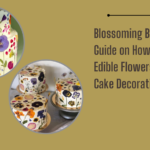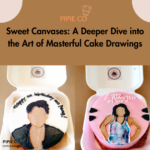Introduction:
Indulging in a slice of beautifully crafted cake is an experience that transcends the realm of mere desserts. Cake carving is an art form that transforms a simple confection into a masterpiece, capturing the imagination and delighting taste buds. In this guide, we delve into the enchanting world of cake carving techniques, unlocking the secrets to creating edible sculptures that are as pleasing to the eye as they are to the palate.
- Choosing the Right Cake Base:
The foundation of any great cake carving is a sturdy and delicious base. Opt for dense and moist cakes like chocolate, red velvet, or carrot, as they provide the necessary structural integrity to withstand the carving process. A well-prepared cake is essential for the success of your sculpted creation. - Tools of the Trade:
Before embarking on your cake carving journey, gather the essential tools. A sharp serrated knife, offset spatula, and a set of modeling tools will be your trusted companions. These tools enable you to shape and mold the cake with precision, turning it into a canvas for your creative expression. - Sketching Your Design:
Just as a sculptor starts with a vision, sketch your design on paper before touching the cake. Consider the theme, shape, and size of your creation. This preliminary step will guide your carving process and help you avoid unnecessary mistakes. - Layering and Crumb Coating:
Carving a cake is a multi-step process, and it begins with layering. Stack and secure your cakes with a delicious filling in between. Crumb coat the entire structure with a thin layer of frosting to seal in moisture and create a smooth surface for carving. - The Art of Negative Space:
Embrace the concept of negative space in cake carving. Instead of adding material to create shapes, consider removing excess cake to unveil the desired form. This technique allows for intricate detailing and lends a professional touch to your edible masterpiece. - Progressive Carving:
Approach the carving process gradually. Begin with the basic shape and progressively refine the details. Remember, patience is key. Take your time to ensure each cut contributes to the overall aesthetic of the final design. - Texturing and Detailing:
Elevate your cake carving by incorporating texture and intricate detailing. Use modeling tools to add depth, patterns, and fine lines. Consider edible paints or dusts to enhance the visual appeal and bring your creation to life. - Frosting and Finishing Touches:
Once satisfied with the carved structure, apply a final layer of frosting to achieve a polished look. Experiment with different frosting techniques, such as smooth fondant or textured buttercream, to complement the theme of your sculpted masterpiece. - Edible Accents and Decorations:
Enhance your cake carving with edible accents and decorations. Fondant flowers, chocolate curls, or edible paints can add the finishing touches, transforming your creation into a work of art that is almost too beautiful to eat. - Showcasing Your Masterpiece:
Finally, present your sculpted sweetness with pride. Whether for a special occasion or as a centerpiece for a celebration, your meticulously carved cake is sure to be the highlight of any gathering.
Conclusion:
Sculpting sweetness through cake carving is a delightful blend of creativity and culinary skill. As you embark on your cake carving journey, remember that practice makes perfect. Embrace the joy of experimentation, and soon you’ll be crafting edible masterpieces that leave a lasting impression on both the eyes and taste buds of those lucky enough to enjoy your sweet creations.







